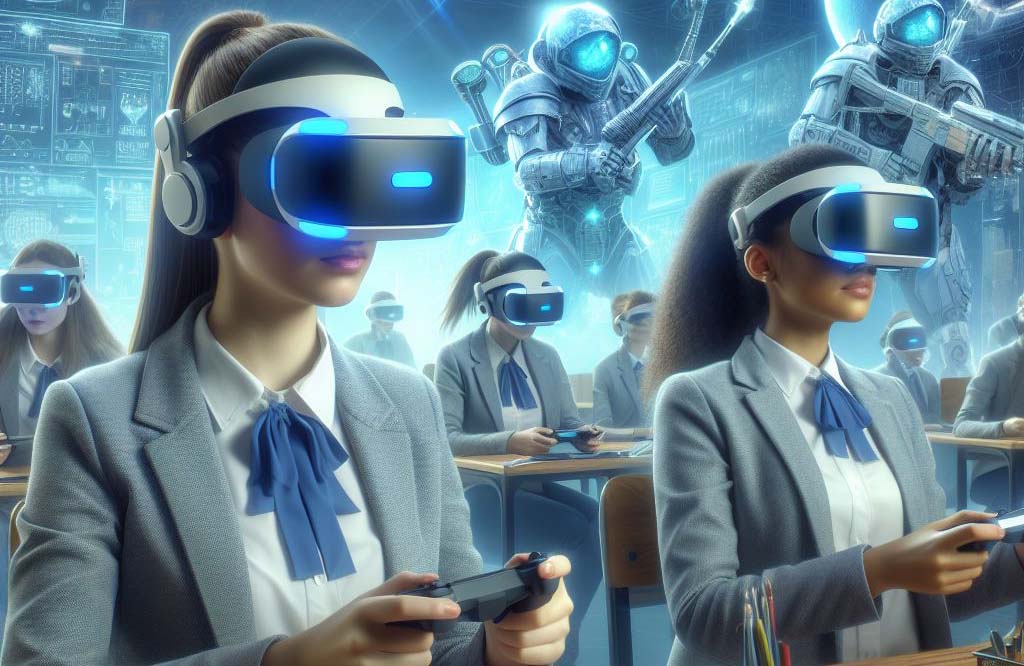Multiplayer VR Games might become important part of studies and working life in the future. This is precisely why many of the world’s best VR developers are offering users interesting VR multiplayer games – also in the context of VR applications related to education.
Looking ahead, the landscape of free VR games is likely to grow and evolve. We can expect more sophisticated educational games in multiplayer and increased integration with traditional learning systems. It even might be that we will witness the rise of VR gaming as a standard tool in educational institutions.
Among the most exciting developments in this field is the advent of multiplayer VR games in education. These games are not only redefining entertainment but also opening up new avenues for collaborative learning and skill development.
Enhancing Collaborative Learning through Virtual Worlds
One of the key advantages of multiplayer VR games in education is their ability to foster collaboration among students. In a virtual setting, learners can work together, irrespective of their physical location, to solve problems, complete projects, and engage in simulations that mirror real-world scenarios. This collaborative approach not only improves communication and teamwork skills but also helps students understand complex concepts in a more engaging and hands-on manner.
For example, a multiplayer VR game that simulates a historical event allows students to experience and interact with the past in a way that textbooks cannot provide. They can work as a team to explore ancient civilizations, participate in historical events, and even alter scenarios to see different outcomes. Such immersive experiences make learning more dynamic and memorable.
Multiplayer VR Games – Developing Critical Skills in a Virtual Environment
Multiplayer VR games also play a crucial role in developing critical skills such as problem-solving, creativity, and decision-making. In these virtual environments, students are often presented with challenges that require quick thinking and innovative solutions. The interactive nature of VR means that students learn by doing, which is often more effective than passive learning methods.
Furthermore, these games can be designed to cater to various learning styles and abilities, providing a more inclusive educational experience. For instance, students who are visual learners can benefit greatly from the 3D, graphical nature of VR, while kinesthetic learners can take advantage of the physical aspect of interacting with the virtual environment.
Preparing Students for the Future
Another significant benefit of multiplayer VR games in education is their role in preparing students for the future. Many of these games are designed to simulate real-life scenarios and professions, giving students a taste of what their future careers might entail. For example, a VR game that simulates medical procedures can give aspiring healthcare professionals a realistic glimpse into their future field, preparing them for the challenges and responsibilities they will face.
Moreover, as the world becomes increasingly digital, familiarity with VR technology and virtual collaboration tools will be invaluable skills in the workforce. By integrating these games into the educational curriculum, schools are not only enhancing the learning experience but also equipping students with the tools and knowledge they need to succeed in a digital-first world.
Multiplayer VR Games in Education – Conclusion
Multiplayer VR games are at the forefront of educational innovation, offering an exciting blend of entertainment and learning. As this technology continues to evolve, it will undoubtedly unlock even more potential for enhancing education.
These games represent a significant step towards a more interactive, collaborative, and engaging form of learning, preparing students not just for their academic pursuits but for the challenges of the modern world. With the continued integration of VR in education, we are stepping into a new era of learning, where the boundaries of the classroom are extended into expansive virtual worlds.
